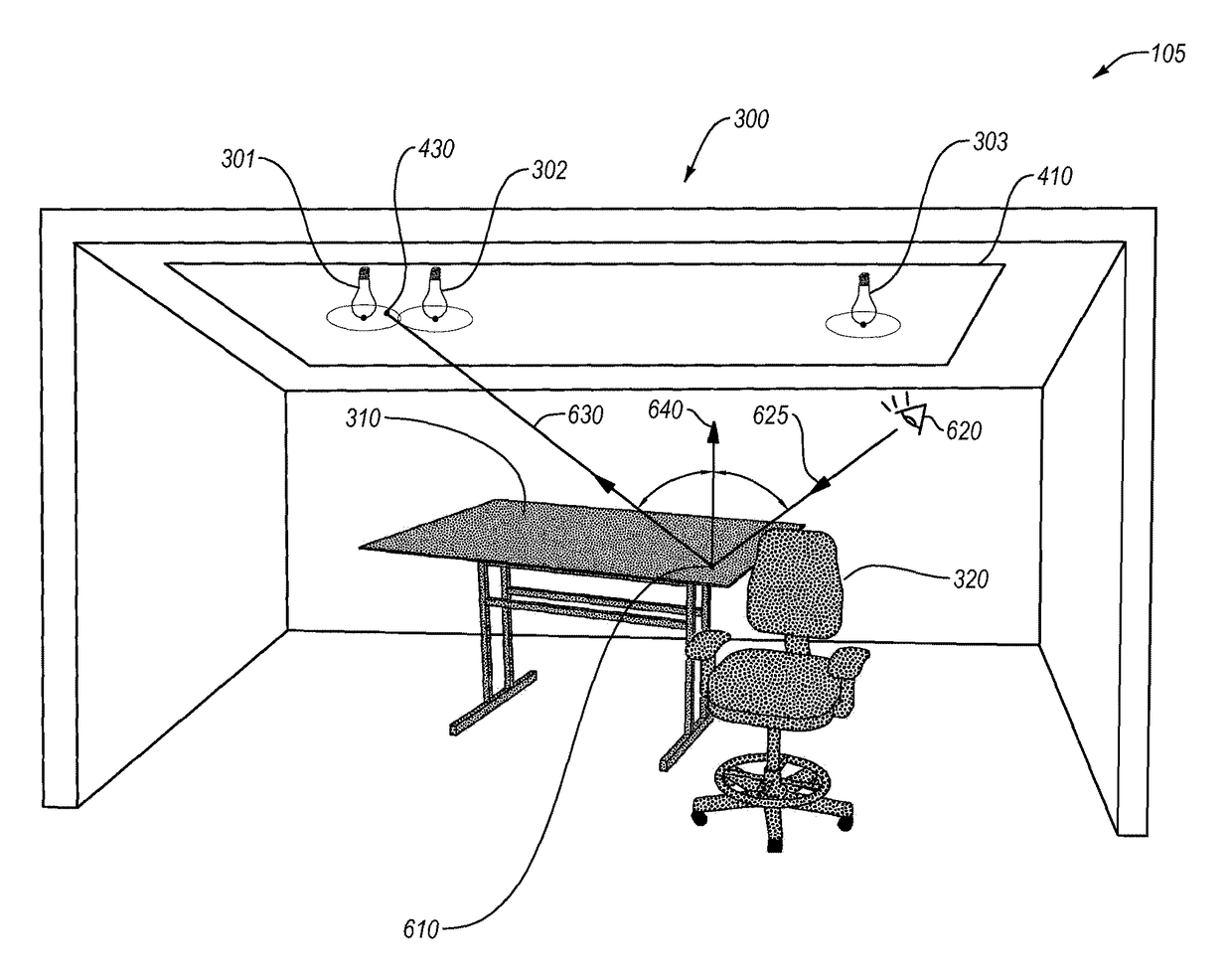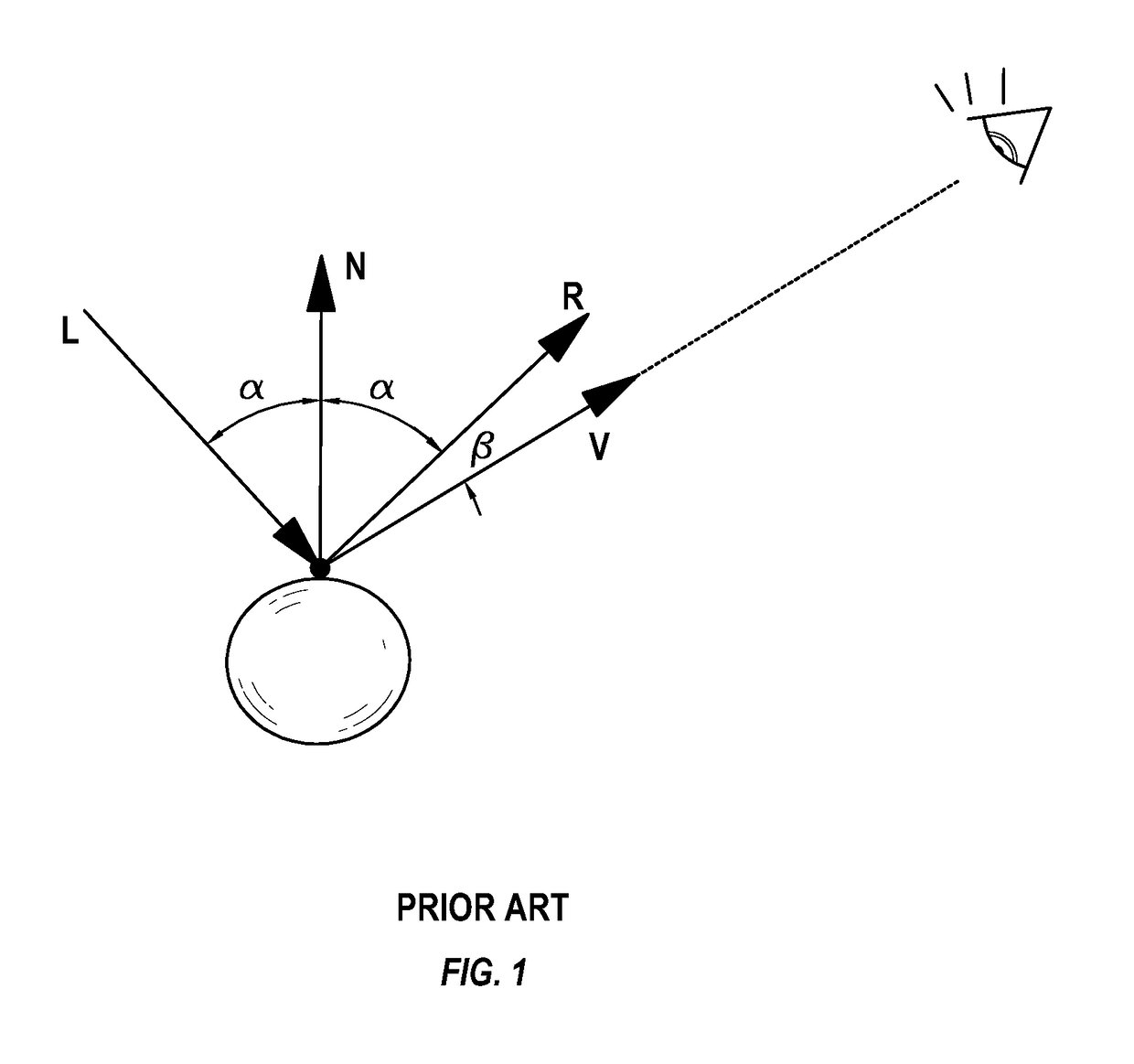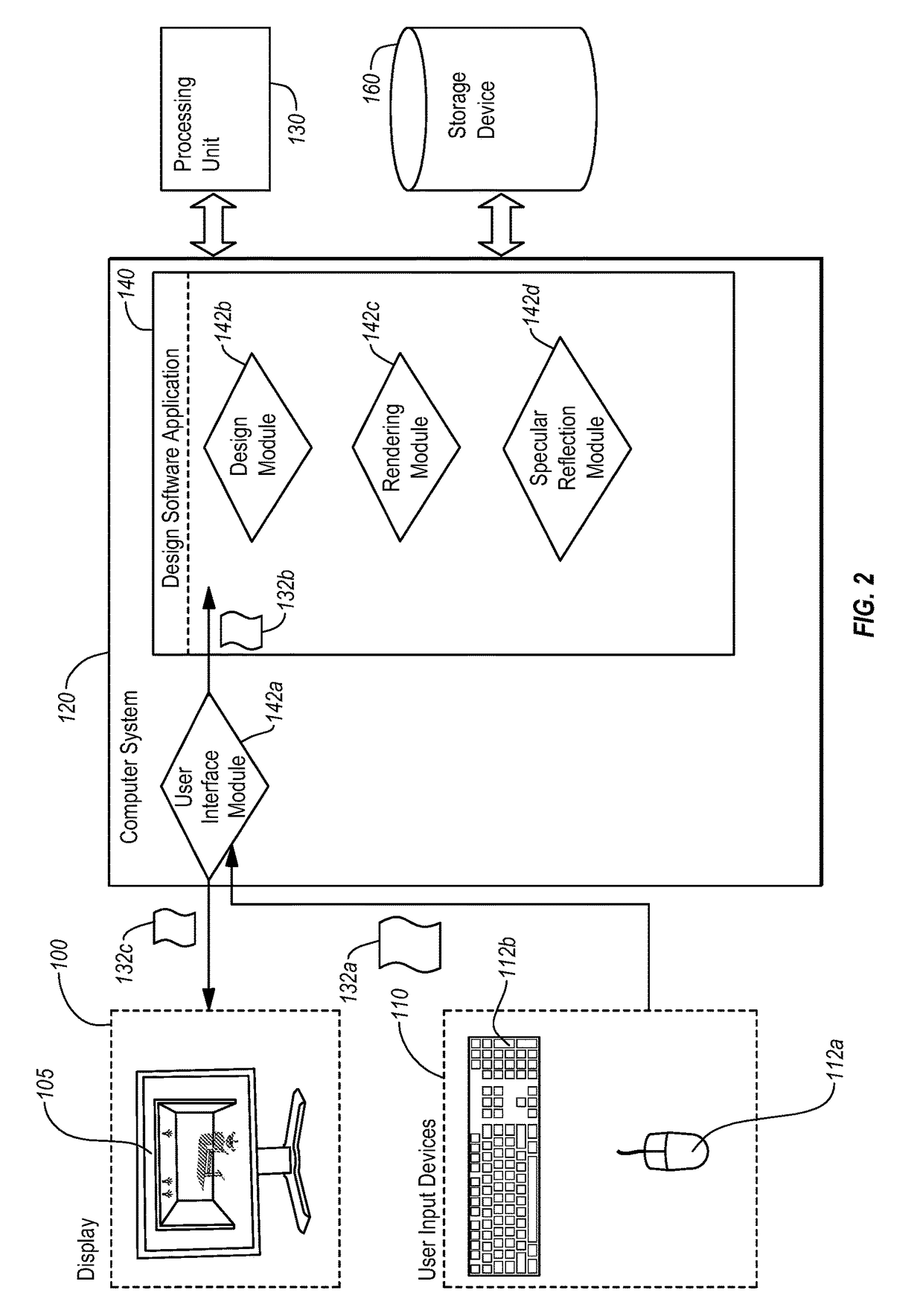Method and system for efficient modeling of specular reflection
a specular reflection and efficient technology, applied in the field of computer generated graphics, can solve the problems of less realistic images to speed up the rendering, inconvenient designers, and a relatively resource-intensive process for three-dimensional rendering, and achieve the effect of sufficient realism, fast and realistic simulation
- Summary
- Abstract
- Description
- Claims
- Application Information
AI Technical Summary
Benefits of technology
Problems solved by technology
Method used
Image
Examples
Embodiment Construction
[0031]Implementations of the present invention extend to systems, methods, and apparatus configured to allow efficient rendering of realistic specular reflection of objects in a design software application. In particular, one or more implementations of the present invention allow for simulation of specular reflection without having to perform a separate calculation for each light in an environment with multiple lights. In addition, one or more implementations of the present invention have the ability to model specular reflection with sufficient realism while turning off lighting in one area of the scene, and while turning on lighting in another area. In general, one or more implementations of the invention provide fast and realistic simulation of specular reflection, allowing real-time rendering of videos and dynamic scenes in applications such as virtual walk-throughs of interior design spaces, video games, and other virtual environments.
[0032]For example, one or more implementatio...
PUM
 Login to View More
Login to View More Abstract
Description
Claims
Application Information
 Login to View More
Login to View More - R&D
- Intellectual Property
- Life Sciences
- Materials
- Tech Scout
- Unparalleled Data Quality
- Higher Quality Content
- 60% Fewer Hallucinations
Browse by: Latest US Patents, China's latest patents, Technical Efficacy Thesaurus, Application Domain, Technology Topic, Popular Technical Reports.
© 2025 PatSnap. All rights reserved.Legal|Privacy policy|Modern Slavery Act Transparency Statement|Sitemap|About US| Contact US: help@patsnap.com



